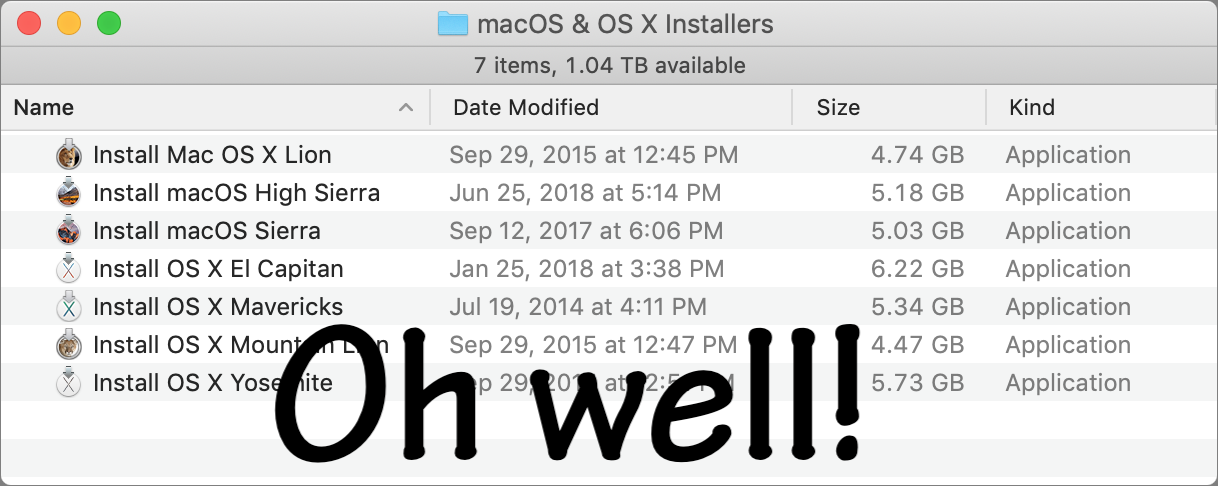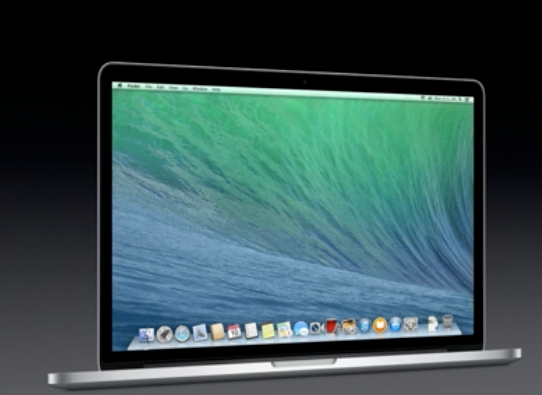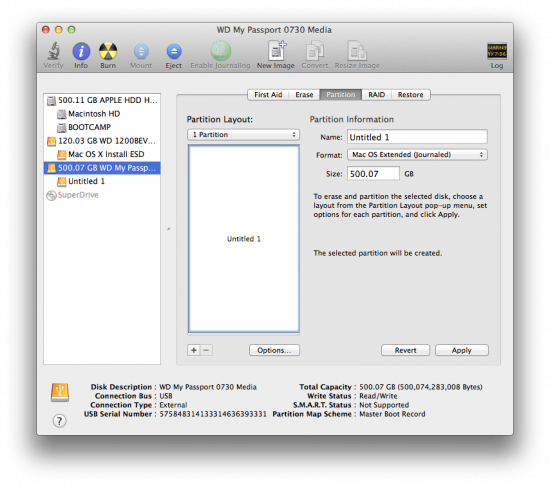Jun 30, 2014 Apple Mac OS X 10.9.4 Mavericks - ESD DMG. An icon used to represent a menu that can be toggled by interacting with this icon. Jun 11, 2021 Open the disk image, then open the.pkg installer inside the disk image. It installs an app named Install Version Name. Open that app from your Applications folder to begin installing the operating system. MacOS Sierra 10.12 can upgrade El Capitan, Yosemite, Mavericks, Mountain Lion, or Lion.
Install Mac OS X 10.9.0 Mavericks.dmg. Install Mac OS X 10.9.0 Mavericks.dmg (5.69 GB) Choose free or premium download. FAST INSTANT DOWNLOAD. Install Mac OS X 10.9.0 Mavericks.dmg (5.69 GB) Choose free or premium download. FAST INSTANT DOWNLOAD. If you're running an old OS X 10.9 or OS X 10.9.1 versions than OS X 10.9.2 Final Update is recommended upgrade for all OS X Mavericks users because it contains several fixes, improvement, system enhancement, performance, stability and introduction of new features etc. Apple Mac users can Download OS X Mavericks 10.9.2 Final Update/Setup.DMG.
Mac OSX Lion 10.7.2 DMG Free Download Clean Official Mac Store Release DVD. It is complete bootable Mac OSX Lion 10.7.2 DMG Download in Single Direct Link
Next Post Download Mac OS X Mavericks 10.9 DMG Image Free. Glen Godfrey is the founder of ISO Packet, leading tech research and review portal. Apple Mac OS X 10.9.4 Mavericks - ESD DMG. An icon used to represent a menu that can be toggled by interacting with this icon. May 28, 2018 Mac OS Mavericks Download 10.9. File Format: ISO/DMG. File size: 5.1G. Torrent Download: Download. Direct Download: Download. Note: Let Us Know In the comments if any link is not working, We will update ASAP. About Mac OS Mavericks 10.9. Apple OS X Mavericks was first announced in June 2013 and was then released in October of 2013.
- Time Machine :Requires an additional hard drive or Time Capsule (sold separately).
- Photo Booth: Requires a FaceTime or iSight camera (built in or external), USB video class (UVC) camera, or FireWire DV camcorder. Backdrop effects when using a DV camcorder require fixed focus, exposure, and white balance.
- FaceTime :- Video calls require a built-in FaceTime camera, an iSight camera (built in or external), a USB video class (UVC) camera, or a FireWire DV camcorder; and a 128-Kbps upstream and downstream Internet connection. Making HD video calls requires a built-in FaceTime HD camera and a 1-Mbps upstream and downstream Internet connection. Receiving HD video calls requires a supported Intel-based Mac.
- Screen sharing
- Audio chats require a microphone and a 56-Kbps Internet connection. Video chats require a FaceTime or iSight camera (built in or external), USB video class (UVC) camera, or FireWire DV camcorder; and a 128-Kbps upstream and downstream Internet connection.
- Backdrop effects when using a DV camcorder require fixed focus, exposure, and white balance. Some iChat features offer better performance and quality with higher system capabilities. More details
- AirDrop
MacBook Air (Late 2010 or newer)
MacBook (Late 2008 or newer)
iMac (Early 2009 or newer)
Mac Os X Mavericks 10.9 Dmg X
Mac mini (Mid 2010 or newer)
Mac Os X Mavericks Reviews
Mac Pro (Early 2009 with AirPort Extreme card, or Mid 2010)
- Boot Camp :Supports existing Boot Camp installations with Windows XP Service Pack 2, Windows Vista, or Windows 7. New Boot Camp installations require Windows 7 (sold separately).
- Exchange support : Requires Microsoft Exchange Server 2007 Service Pack 1 Update Rollup 4 or Exchange Server 2010. Auto-setup requires enabling the Autodiscovery feature of Microsoft Exchange Server.
- QuickTime X movie capture :Requires a FaceTime or iSight camera (built in or external), USB video class (UVC) camera, or FireWire DV camcorder.
Buy Mac Os X Mavericks
- OpenCL :Requires one of the following graphics cards or graphics processors: NVIDIA GeForce 320M, GeForce GT 330M, GeForce 9400M, GeForce 9600M GT, GeForce 8600M GT, GeForce GT 120, GeForce GT 130, GeForce GTX 285, GeForce 8800 GT, GeForce 8800 GS, Quadro FX 4800, Quadro FX5600 .ATI Radeon HD 4670, ATI Radeon HD 4850, Radeon HD 4870, ATI Radeon HD 5670, ATI Radeon HD 5750, ATI Radeon HD 5770, ATI Radeon HD 5870 .AMD Radeon HD 6630M, AMD Radeon HD 6750M, AMD Radeon HD 6770M, AMD Radeon HD 6970M
- Gestures : Requires a Multi-Touch trackpad, Magic Trackpad, or Magic Mouse.VoiceOver gestures require a Multi-Touch trackpad or Magic Trackpad.
Mac Os X Mavericks 10.9 Dmg Download


- Mac computer with an Intel Core 2 Duo, Core i3, Core i5, Core i7, or Xeon processor
- 2GB of memory
- OS X v10.6.6 or later (v10.6.8 recommended)
- 7GB of available space
- Some features require an Apple ID; terms apply.
- Some features require a compatible Internet service provider; fees may apply.
Thanks to visit All DMG Mac Update, dont forget to subscribe another info about mac update.
- Mac OS X Mavericks Free Download DMG 10.9 Bootable Installer Version. It is complete bootable Mavericks 10.9 DMG Disk Image for Clean OS Install. OS X Mavericks (version 10.9) is the tenth major release of OS X, Apple Inc.' S desktop and server operating system for Macintosh computers.
- I have an iMac 7,1. I am erasing the HDD so I can set up the machine for donation. I cannot find an appropriate version of OS X to download and install. As I understand it, the computer can handle up to El Capitan. I have searched everywhere for Mavericks and others to no avail.
Mac OS X Mavericks 10.9.3 (Build: 13D65) Final is officially available at Mac App Store for Free via iTunes, and also the Official Direct Download Links of OS X Mavericks 10.9.3 Final Standalone Setup Installer.DMG File and OS X Mavericks 10.9.3 Final Update.DMG File for manual installation on multiple computers/laptops is also available below. Compatible devices for Mac OS X Mavericks download. IMac ( After 2006 iMac versions), Mac Book and Mac Book Black/White (the year 2008 and 2009 upwards), All Mac Book Retina Models, Mac Book Pro 15 inch, Mac Book Pro 17 inch, Mac Mini (2007 or later), Mac Book Air 2008 or later, Mac Pro (2008 or later), Mac Book Pro 13 inch (2009 or later), Xserve (2009).
Quickstart
- Install Xcode and the Xcode Command Line Tools
- Agree to Xcode license in Terminal:
sudo xcodebuild -license - Install MacPorts for your version of the Mac operating system:
Installing MacPorts
MacPorts version 2.6.3 is available in various formats for download and installation (note, if you are upgrading to a new major release of macOS, see the migration info page):
- “pkg” installers for Catalina, Mojave, High Sierra and Sierra, for use with the macOS Installer. This is the simplest installation procedure that most users should follow after meeting the requirements listed below. Installers for legacy platforms El Capitan, Yosemite, Mavericks, Mountain Lion, Lion, Snow Leopard, Leopard and Tiger are also available.
- In source form as either a tar.bz2 package or a tar.gz one for manual compilation, if you intend to customize your installation in any way.
- Git clone of the unpackaged sources, if you wish to follow MacPorts development.
- The selfupdate target of the port(1) command, for users who already have MacPorts installed and wish to upgrade to a newer release.
Checksums for our packaged downloads are contained in the corresponding checksums file.
The public key to verify the detached GPG signatures can be found under the attachments section on jmr's wiki page. (Direct Link).
Please note that in order to install and run MacPorts on macOS, your system must have installations of the following components:
- Apple's Xcode Developer Tools (version 11.0 or later for Catalina, 10.0 or later for Mojave, 9.0 or later for High Sierra, 8.0 or later for Sierra, 7.0 or later for El Capitan, 6.1 or later for Yosemite, 5.0.1 or later for Mavericks, 4.4 or later for Mountain Lion, 4.1 or later for Lion, 3.2 or later for Snow Leopard, or 3.1 or later for Leopard), found at the Apple Developer site, on your Mac operating system installation CDs/DVD, or in the Mac App Store. Using the latest available version that will run on your OS is highly recommended, except for Snow Leopard where the last free version, 3.2.6, is recommended.
Apple's Command Line Developer Tools can be installed on recent OS versions by running this command in the Terminal:
Older versions are found at the Apple Developer site, or they can be installed from within Xcode back to version 4. Users of Xcode 3 or earlier can install them by ensuring that the appropriate option(s) are selected at the time of Xcode's install ('UNIX Development', 'System Tools', 'Command Line Tools', or 'Command Line Support').
- Xcode 4 and later users need to first accept the Xcode EULA by either launching Xcode or running:
- (Optional) The X11 windowing environment for ports that depend on the functionality it provides to run. You have multiple choices for an X11 server:
- Install the xorg-server port from MacPorts (recommended).
- The XQuartz Project provides a complete X11 release for macOS including server and client libraries and applications. It has however not been updated since 2016.
- Apple's X11.app is provided by the “X11 User” package on older OS versions. It is always installed on Lion, and is an optional installation on your system CDs/DVD with previous OS versions.
macOS Package (.pkg) Installer

The easiest way to install MacPorts on a Mac is by downloading the pkg or dmg for Catalina, Mojave, High Sierra, Sierra, El Capitan, Yosemite, Mavericks, Mountain Lion, Lion, Snow Leopard, Leopard or Tiger and running the system's Installer by double-clicking on the pkg contained therein, following the on-screen instructions until completion.
This procedure will place a fully-functional and default MacPorts installation on your host system, ready for usage. If needed your shell configuration files will be adapted by the installer to include the necessary settings to run MacPorts and the programs it installs, but you may need to open a new shell for these changes to take effect.
The MacPorts “selfupdate” command will also be run for you by the installer to ensure you have our latest available release and the latest revisions to the “Portfiles” that contain the instructions employed in the building and installation of ports. After installation is done, it is recommended that you run this step manually on a regular basis to to keep your MacPorts system always current:
At this point you should be ready to enjoy MacPorts!
Type “man port” at the command line prompt and/or browse over to our Guide to find out more information about using MacPorts. Help is also available.
Source Installation
If on the other hand you decide to install MacPorts from source, there are still a couple of things you will need to do after downloading the tarball before you can start installing ports, namely compiling and installing MacPorts itself:
- “cd” into the directory where you downloaded the package and run “tar xjvf MacPorts-2.6.3.tar.bz2” or “tar xzvf MacPorts-2.6.3.tar.gz”, depending on whether you downloaded the bz2 tarball or the gz one, respectively.
- Build and install the recently unpacked sources:
- cd MacPorts-2.6.3
- ./configure && make && sudo make install
- cd ./
- rm -rf MacPorts-2.6.3*
These steps need to be perfomed from an administrator account, for which “sudo” will ask the password upon installation. This procedure will install a pristine MacPorts system and, if the optional steps are taken, remove the as of now unnecessary MacPorts-2.6.3 source directory and corresponding tarball.
To customize your installation you should read the output of “./configure --help more” and pass the appropriate options for the settings you wish to tweak to the configuration script in the steps detailed above.
You will need to manually adapt your shell's environment to work with MacPorts and your chosen installation prefix (the value passed to configure's --prefix flag, defaulting to /opt/local):
- Add ${prefix}/bin and ${prefix}/sbin to the start of your PATH environment variable so that MacPorts-installed programs take precedence over system-provided programs of the same name.
- If a standard MANPATH environment variable already exists (that is, one that doesn't contain any empty components), add the ${prefix}/share/man path to it so that MacPorts-installed man pages are found by your shell.
- For Tiger and earlier only, add an appropriate X11 DISPLAY environment variable to run X11-dependent programs, as Leopard takes care of this requirement on its own.
Lastly, you need to synchronize your installation with the MacPorts rsync server:
Upon completion MacPorts will be ready to install ports!
It is recommended to run the above command on a regular basis to keep your installation current. Type “man port” at the command line prompt and/or browse over to our Guide to find out more information about using MacPorts. Help is also available.
Git Sources
If you are developer or a user with a taste for the bleeding edge and wish for the latest changes and feature additions, you may acquire the MacPorts sources through git. See the Guide section on installing from git.
Purpose-specific branches are also available at the https://github.com/macports/macports-base/branches url.
Alternatively, if you'd simply like to view the git repository without checking it out, you can do so via the GitHub web interface.
Selfupdate
If you already have MacPorts installed and have no restrictions to use the rsync networking protocol (tcp port 873 by default), the easiest way to upgrade to our latest available release, 2.6.3, is by using the selfupdate target of the port(1) command. This will both update your ports tree (by performing a sync operation) and rebuild your current installation if it's outdated, preserving your customizations, if any.
Mac Os X Mavericks Installesd.dmg Download
Other Platforms
Running on platforms other than macOS is not the main focus of The MacPorts Project, so remaining cross-platform is not an actively-pursued development goal. Nevertheless, it is not an actively-discouraged goal either and as a result some experimental support does exist for other POSIX-compliant platforms such as *BSD and GNU/Linux.
The full list of requirements to run MacPorts on these other platforms is as follows (we assume you have the basics such as GCC and X11):
- Tcl (8.4 or 8.5), with threads.
- mtree for directory hierarchy.
- rsync for syncing the ports.
- cURL for downloading distfiles.
- SQLite for the port registry.
- GNUstep (Base), for Foundation (optional, can be disabled via configure args).
- OpenSSL for signature verification, and optionally for checksums. libmd may be used instead for checksums.
Normally you must install from source or from an git checkout to run MacPorts on any of these platforms.
Help
Help on a wide variety of topics is also available in the project Guide and through our Trac portal should you run into any problems installing and/or using MacPorts. Of particular relevance are the installation & usage sections of the former and the FAQ section of the Wiki, where we keep track of questions frequently fielded on our mailing lists.
If any of these resources do not answer your questions or if you need any kind of extended support, there are many ways to contact us!
Check compatibility
You can upgrade to OS Yosemite on any of the following Mac models. Your Mac also needs at least 2GB of memory and 8GB of available storage space.
MacBook introduced in 2009 or later, plus MacBook (13-inch, Aluminum, Late 2008)
MacBook Air introduced in late 2008 or later
MacBook Pro introduced in mid 2007 or later
Mac mini introduced in early 2009 or later
iMac introduced in mid 2007 or later
Mac Pro introduced in early 2008 or later
Xserve models introduced in early 2009
To find your Mac model, memory, storage space, and macOS version, choose About This Mac from the Apple menu . If your Mac isn't compatible with OS X Yosemite, the installer will let you know.Myriad pro font download mac mojave.
Make a backup
Before installing any upgrade, it’s a good idea to back up your Mac. Time Machine makes it simple, and other backup methods are also available. Learn how to back up your Mac.
Get connected
It takes time to download and install OS X, so make sure that you have a reliable Internet connection. Microsoft teams download mac app. If you're using a Mac notebook computer, plug it into AC power.

Download OS X Yosemite
For the strongest security and latest features, find out whether you can upgrade to macOS Catalina, the latest version of macOS.
If you still need OS X Yosemite, use this link: Download OS X Yosemite. A file named InstallMacOSX.dmg will download to your Mac.
Install the macOS installer
Double-click the downloaded file to open a window showing its contents. Then double-click the file within, named InstallMacOSX.pkg.
Follow the onscreen instructions, which will guide you through the steps necessary to install.
Download Os X Dmg Macdrug
Begin installation
Mac Os Mavericks Free Download
After installation of the installer is complete, open the Applications folder on your Mac, then double-click the file named Install OS X Yosemite.
Download Macos Maverick Installer
Click Continue and follow the onscreen instructions. You might find it easiest to begin installation in the evening so that it can complete overnight, if needed.

Allow installation to complete
Please allow installation to complete without putting your Mac to sleep or closing its lid. Your Mac might restart, show a progress bar, or show a blank screen several times as it installs both OS X and related updates to your Mac firmware.
Mac Os X Mavericks Install Dmg Download Torrent
Learn more
Mac Os X Mavericks Installer Dmg Download
- OS X Yosemite won't install on top of a later version of macOS, but you can erase your disk first or install on another disk.
- You can use macOS Recovery to reinstall macOS.